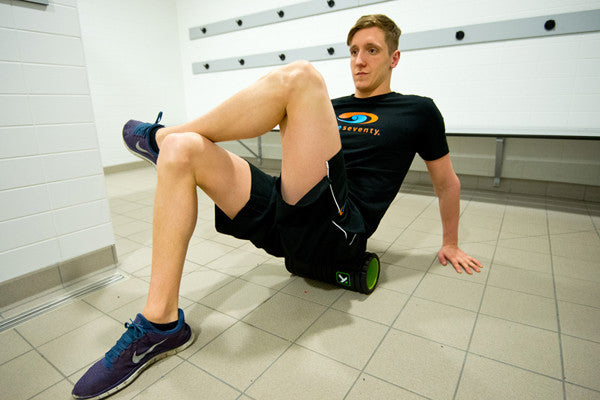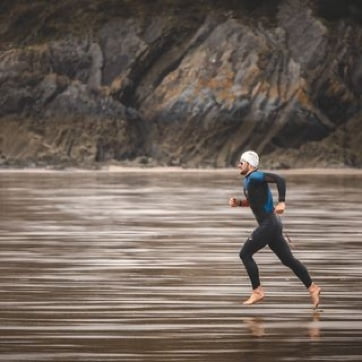“I’d definitely recommend using a foam roller, not just because it helps with warming up and recovery from hard training sessions, but because it’s the little things like you do out of the water, that make the difference in the water.”
- Alfie Howes
The foam roller is now as common on the pool deck as swimsuits and goggles. When used correctly it can provide significant benefits. You can roll any muscle group in your body to help relieve knots and tension. Focus on particular tight, painful spots by applying pressure there, or roll along a whole muscle to help loosen up.
British freestyler and blueseventy athlete Alfie Howes explained, “The roller is like a physio’s hand, so if you use it right it’s like a sports massage.” Based at the University of Bath, Alfie trains alongside some of Britain’s top international competitors such as Michael Jamieson, Lizzie Simmonds and Joe Roebuck.
Alfie, a 200m-freestyler specialist, with a training routine covering 60km in the pool each week and weights and extra gym sessions on top, said regular foam rolling is a big part of his routine.
“I have struggled in the past with shoulder injuries and tightness in my lower back because my hamstrings aren’t that flexible. I was encouraged by my physio to use a foam roller and it really helped. I get knots in my back and having something that helps me work these out on my own is ideal. I try to roll about three times a day. I take my roller to training sessions to use before and after, then when I get home in the evening I’ll usually roll out while I watch TV. Usually it takes me about 15 minutes to do a full body roll out. It’s down time like that when it’s great to utilize this kind of recovery. It’s something really simple to do, and you’ll feel the benefit in your next session compared to if you just sit on the couch. I find I just seize up and ache more if I do nothing.”
Foam rollers are not just a part of swimmers training routines, they’re also important on race days. Alfie added that he wouldn’t go to a swim meet without it. "No way would I leave it at home for competitions. It's now as an important piece of my kit as my goggles and it's become part of my race routine. You can use it to aid in warming up your muscles as well as helping them recover, so I use it before and after I race."
Alfie recommends these four key areas for swimmers – perform each roll for up to three minutes then rest and repeat. Two tips: Avoid joints and injured areas - let them heal before digging into them too much. For particular tight spots, use your body weight to push into the foam roller for additional pressure.
-
Lower back and glutes


Add pressure to this stretch by lifting one leg off the floor
-
IT band and hips

-
Lats and shoulder

-
Triceps and shoulder











